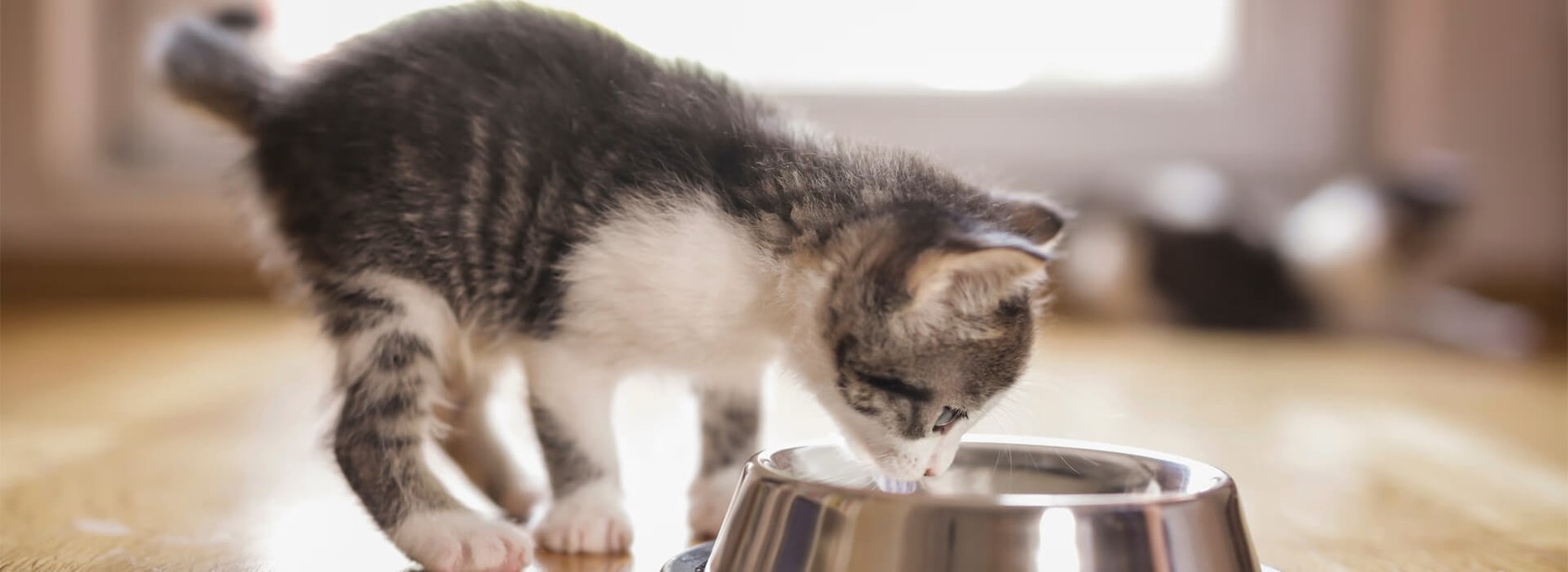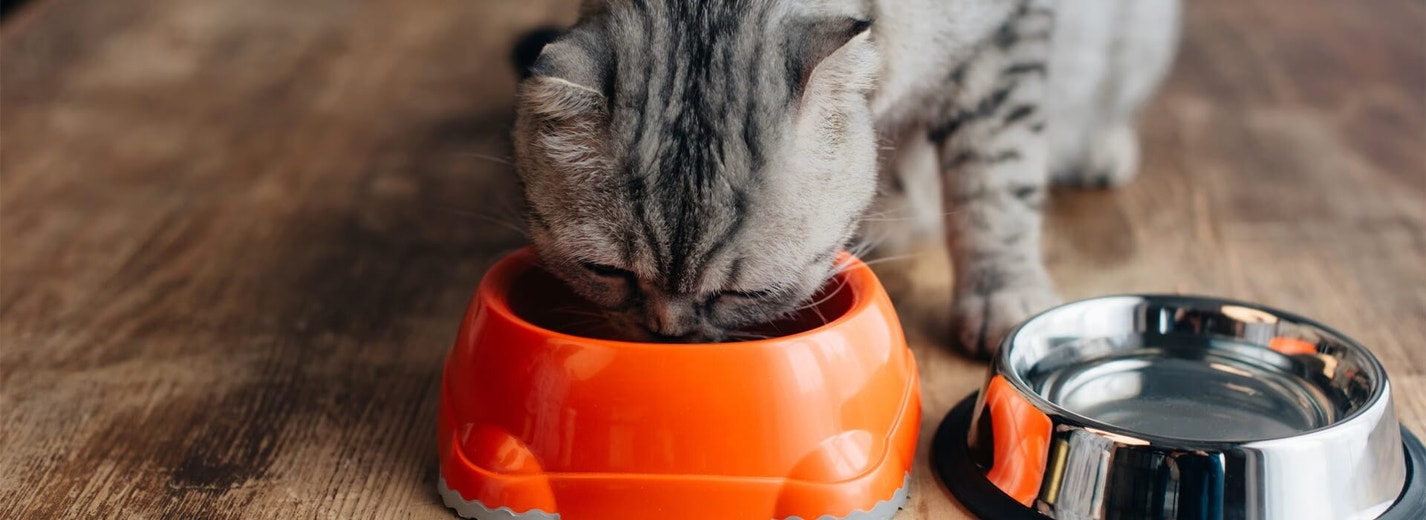
Keeping her coat in good condition
Throughout her life, your cat will spend a lot of her day following her natural instinct to groom. Not only does grooming help your cat look after her coat, but it also reinforces social bonds, and controls parasites.
As your cat gets older, however, she may find it harder to keep her coat as glossy and healthy as it used to be. If she neglects her grooming, your cat's skin might become flaky, and her coat might develop grey or white hairs.
Helping her groom
You’ve probably always helped your cat to groom herself, and enjoyed all the wonderful bonding moments that has brought. So make sure you continue a regular grooming routine, which will help keep her fur shiny and healthy, and her skin soft. Remember that, as your cat gets older, you may need to handle her more delicately than when she was a happy-go-lucky youngster!
Terrible tangles
If your cat's coat gets very tangled and matted, it may be difficult for you to sort it out – and neither you nor your cat are likely to enjoy the untangling experience! If she really is in knots, take her to the vet to be clipped.
The right diet
Diet plays a big part in the condition of your cat’s coat. As your cat gets older, she may not be able to absorb all the nutrients she needs to keep her coat in tip-top condition. That's why it's important you make sure your cat is eating the right food for her age.
See More Articles Like This

Cat’s Ears, Eyes And Skin
Your cat’s eyes and ears are highly sensitive, just like those of her big cat cousins in the wild. Sharp eyesight makes her a natural hunter, while her acute hearing helps her pick up the tiny sounds of her prey moving around.While it's important to visit the vet if you’re worried about your cat’s health, there are some basic checks you can do at home to make sure her eyes, ears and skin are in tip-top condition.HEALTHY EYESTo check your cat’s super-sharp eyes, just follow this simple checklist:Gently pull down your cat’s lower eyelid – the area you see here should be pinkCheck that both your cat’s pupils are a normal sizeStand with your cat next to a daylit window, open and close the curtains, and check how that her pupils react normally to the changing lightCheck your cat’s eyes for coloured discharge, or excessive watering – both signs might mean she’s picked up an eye infectionIf your eye checks reveal anything unusual, take your cat to the vet for a full check-up.HEALTHY EARSIf your cat's spending a lot of time shaking her head or scratching at her ears, there could be something wrong. Here’s how to check your feline friend’s ultra-sensitive ears:Keep her ears generally clean and free of dirtCheck to see if your cat’s ears are a brighter pink than usualStrong odours could indicate an ear infectionWax – especially dark wax or goo – might be a sign of an ear infection or ear mitesInfections caused by mites are relatively easy to cure using eardrops or a special 'spot on' applied to your cats shoulder blades. If there are any other cats in the house, it's a good idea to treat them too. Your vet will advise you about what treatment is best for your cat.Other possible conditions include a cauliflower-like thickening of the outer ear – this will need to be cleaned regularly – or a sudden swelling of the ear flap, which might be a blood blister, usually caused by scratching. Blood blisters sometimes cause the ear flap to scar and crumple, which could damage your cat's hearing – these might need an operation to sort them out. Finally, polyps are fleshy lumps which can prevent air flowing into cat’s ear, leading to illness. These too can be dealt with by surgery.If you’re at all concerned about the health of your cat’s ears, take her straight to the vet.HEALTHY SKINIf you notice your cat licking or scratching herself more than usual, she may have a skin condition. Eczema is a possibility – it’s often caused by an allergic reaction to flea bites. Left untreated, it will cause scabs to develop, giving your cat’s coat a gritty feel. And unfortunately all that extra licking will just make things worse! Your vet will be able to advise you about the best treatment.There’s also a chance that your cat’s itchy skin is caused by a food allergy. If so, your vet will help you move your cat on to a different diet.
READ MORE
Cat Weight
In the wild, big cats eat only the prey they catch. Your cat is a natural hunter too, however she relies on you to feed her the kind of balanced diet she needs to stay healthy … and the right weight. But it can be hard to resist the pleading look in those big eyes, and treating can be an important part of playtime. So take a moment occasionally to check your cat’s weight, and make sure she hasn’t been over-indulging!WEIGHING INChecking your cat’s weight couldn’t be simpler – just use your bathroom scales. First, weigh yourself. Then step on the scales again, this time holding your cat in your arms. Subtracting the first number from the second will give you the weight of your cat!CHECKING HER OVERIt’s also a good idea to look for changes in your cat’s body weight. You can do this by standing directly above her and looking down. If you can you see a slight "waist" behind her ribs, she may be overweight. Look too for pouches of fat between her hind legs, and under her belly.Alternatively, place both hands on your cat’s sides. If you can feel her ribs, your feline friend is the perfect weight. But if her ribs are actually sticking out, she's too thin.HELPING AN OVERWEIGHT CATIf your cat is beginning to look a bit podgy, your vet will be able to suggest a diet plan. It's better for your cat to eat little and often, so try giving her four small meals a day, instead of two big ones. And you’ll probably need to put a stop to all those treats and snacks!Just like her big cat cousins, your cat thrives on plenty of exercise – and this can help her shed weight too. Get your cat used to the idea with short bursts of playful activity. Then gradually extend her playtime, adding five minutes here and there, until she's getting a full workout.HELPING AN UNDERWEIGHT CATIf you think your cat is underweight, ask your vet for advice about how much, and how often, to feed her. If she doesn’t improve, she might be poorly, so take her back to the vet for a check-up.
READ MORE
Understanding Your Cat
Just like her big cat cousins, your feline friend’s behaviour is driven by a wide range of natural instincts. By understanding these, you’ll get a much better idea about why she does the things she does. That way, you won’t fall into the trap of thinking your cat’s being naughty or stubborn … and you’ll realize instead that she’s just being a cat!By learning these natural behaviours, you’ll better understand the things your cat is trying to communicate – and so your relationship will flourish. Your cat is communicating with you all the time – you just have to watch and listen!NATURAL INSTINCTSBy nature, your cat is a solitary creature. She likes to spend time alone, especially when she’s asleep or on the prowl. Your cat also has a powerful instinct to hunt at night – a natural urge that won't be dampened even if you feed her regularly through the day.It’s important to let your cat express her natural behaviour. If they want to spend time alone, make sure there are places in your home to which they can retreat. Like most cats, they'll probably like enclosed areas such as cardboard boxes or cat beds.You’ll find more details in our article on cat's hunting instinctsA BORN HUNTERIn the wild, all big cats are natural hunters. Your feline companion is just the same, which is why it’s important to encourage her instinctive desire to go hunting. Don’t worry, that doesn’t have to mean birds or mice – a simple cat toy should do the trick! Fishing rod toys, for example, are a great way for you and your cat to play together, while allowing her to show off her natural hunting skills. Let her win every now and then, and your cat will be brimming with pride!If your cat exercises her hunting abilities inside the home, there’s less chance of her bringing you any prey she might catch outside. However, if you do find a bird or mouse on the doorstep, remember that your cat’s just finishing her hunt in the place she feels most safe. She’s not being naughty, and it isn’t a gift – she’s simply demonstrating that there’s no place like home!A NOSE FOR COMMUNICATIONLike her cousins in the wild, your cat communicates using scented messages, which she leaves by scratching, spraying urine and rubbing. So, when your cat rubs herself on walls, furniture or doors, what she's actually doing is marking her territory. And if she rubs against your legs, she's really paying you a compliment by telling you that you belong to her!Scratching leaves visual messages, so it helps to keep your cat's claws nice and sharp. Make sure your cat has a specific area in the house where she's allowed – even encouraged – to scratch. To stop her from ruining your furniture, give her a special scratching post.UNDERSTANDING YOUR CATJust like her big cat cousins, your feline friend’s behaviour is driven by a wide range of natural instincts. By understanding these, you’ll get a much better idea about why she does the things she does. That way, you won’t fall into the trap of thinking your cat’s being naughty or stubborn … and you’ll realize instead that she’s just being a cat!By learning these natural behaviours, you’ll better understand the things your cat is trying to communicate – and so your relationship will flourish. Your cat is communicating with you all the time – you just have to watch and listen!NATURAL INSTINCTSBy nature, your cat is a solitary creature. She likes to spend time alone, especially when she’s asleep or on the prowl. Your cat also has a powerful instinct to hunt at night – a natural urge that won't be dampened even if you feed her regularly through the day.It’s important to let your cat express her natural behaviour. If they want to spend time alone, make sure there are places in your home to which they can retreat. Like most cats, they'll probably like enclosed areas such as cardboard boxes or cat beds.You’ll find more details in our article on cat's hunting instinctsA BORN HUNTERIn the wild, all big cats are natural hunters. Your feline companion is just the same, which is why it’s important to encourage her instinctive desire to go hunting. Don’t worry, that doesn’t have to mean birds or mice – a simple cat toy should do the trick! Fishing rod toys, for example, are a great way for you and your cat to play together, while allowing her to show off her natural hunting skills. Let her win every now and then, and your cat will be brimming with pride!If your cat exercises her hunting abilities inside the home, there’s less chance of her bringing you any prey she might catch outside. However, if you do find a bird or mouse on the doorstep, remember that your cat’s just finishing her hunt in the place she feels most safe. She’s not being naughty, and it isn’t a gift – she’s simply demonstrating that there’s no place like home!A NOSE FOR COMMUNICATIONLike her cousins in the wild, your cat communicates using scented messages, which she leaves by scratching, spraying urine and rubbing. So, when your cat rubs herself on walls, furniture or doors, what she's actually doing is marking her territory. And if she rubs against your legs, she's really paying you a compliment by telling you that you belong to her!Scratching leaves visual messages, so it helps to keep your cat's claws nice and sharp. Make sure your cat has a specific area in the house where she's allowed – even encouraged – to scratch. To stop her from ruining your furniture, give her a special scratching post.
READ MORE
Cat communication: why do cats meow?
As a cat parent, you will be familiar with the sound of your cat meowing – and you’ve almost certainly asked yourself the question: “why is my cat meowing?”After all, who could resist wanting to know what their feline friend is thinking as they meow plaintively early in the morning, or while weaving through your legs and whining continuously.From ‘’Hello!’’ to "I'm hungry!", we look at the circumstances in which your cat meows or vocalizes to help you understand your resident feline a little better.Reasons your cat may be meowingWhile kittens meow to let their mother know they're cold or hungry, adult cats don’t actually meow at each other, just at people.Your cat may be trying to communicate the following when he or she meows:• Illness – Constant cat meowing can be a sign of illness such as kidney disease, problems urinating or other health issues. If this behaviour is something new in your cat, contact your local vet• Attention seeking – Despite many people thinking that cats like to be left alone, cats often meow to initiate play, petting, or to get you to talk to them• Hunger – Your cat will make sure to remind you if the cat food bowl is empty, and you may notice your cat becoming more vocal when it gets closer to feeding time• Greeting – Some cats may greet you when you arrive home, or even when you pass them in the house• Stress – A new pet, change in home or the loss of a loved one may cause your cat to become stressed and often more vocal. Try to find out what is causing the stress in your cat and help them adjust to the change• Aging – Just like us, cats can suffer from mental confusion, or cognitive dysfunction, as they age. This may lead to your cat crying for no apparent reason. If this is the case, consult with your vet• Wanting to breed - Cats that aren’t spayed or neutered will make a lot more noise. Females yowl when in heat, and males yowl when they smell a female in heatDifferent meows mean different thingsThere are many different meows that cats can use varying in length, pitch and volume. Generally, the following meows have these meanings:• Short meow - a short, high-pitched meow is a standard “Hello!”• Multiple meows - this is an excited greeting. ‘’YAY, you’re home!’’• Mid-pitch meow - asking you for cat food• Drawn-out “mrrroooow” - demanding something, ‘’Open the door now!’’• Low-pitch “MRRRooooowww” - complaint of something, “Why is my cat food bowl empty?”• High-pitch RRRROWW! – pain or anger “That’s my tail you stepped on!”While there are many reasons your feline resident could be meowing, you will know as a cat parent that sometimes your cat meows for no apparent reason at all.Paying attention to the circumstances in which your cat meows or vocalizes, and the sounds he or she makes, will help you better understand your furry companion.
READ MORE